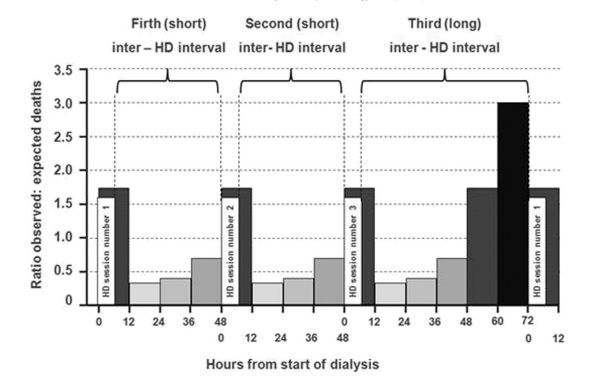
ToxicologyMushrooms are difficult to identify due to their changing shape with growth. Cyclopeptide amatonxin containing mushrooms are the most dangerous (Hepatotoxicity). Treatment includes activated charcoal to decontaminate the bowel, penicillin, and Silibinin (available from one company in California who will release medication). Patients develop nausea & vomiting approximately 6 hours after ingestion and the toxin destroys hepatic cells leading to liver failure. M&MESRDPatients on dialysis have a 5 year survival rate of 33%, and an 8x higher mortality rate than average. Patients are prone to arrhythmias due to structural changes and remodeling of the heart, as well as electrolyte shifts during dialysis. Sudden cardiac arrest is the most common cause of death, and more frequent during the weekend when the patient is not having dialysis, as well as when the patient is having large volumes dialyzed. Always have a high suspicion of pericardial effusion, hyperphosphatemia, and infectious etiologies. Patients with renal failure may have elevated troponins due to LVH or decreased clearance, however patients should still be evaluated for ischemia. Renal Lithiasis & PyelonephritisRisk Factors for infection & sepsis with renal stones:
RSI EducationRSI is a fundamental skill for EM physicians, however there is currently no curriculum in most medical schools regarding RSI. 4th year medical students were targeted for a curriculum of anatomy, intubation, and RSI with hands-on and didactic sessions. The curriculum was shown to statistically improve the students' ability to perform RSI. Health Policy UpdateHow to get involved in health policy:
Ultrasound Education Mini-fellowshipWorking to update and increase intern ultrasound education and presentations.
0 Comments
Leave a Reply. |
Categories
Archive
February 2018
Please read our Terms of Use.
|

